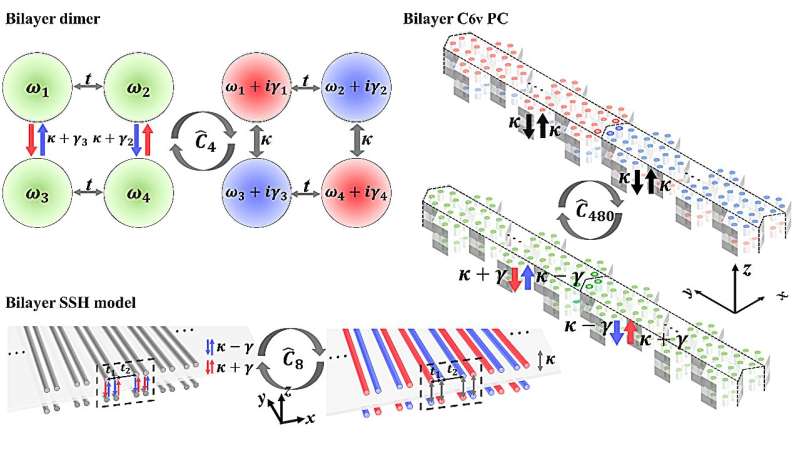This article has been reviewed according to Science X's editorial process and policies. Editors have highlighted the following attributes while ensuring the content's credibility:
fact-checked
proofread
A scheme for realizing nonreciprocal interlayer coupling in bilayer topological systems

The exchange of energy and environment is inevitable in any physical system, so non-Hermitian systems that can be described by non-Hermitian Hamiltonians are ubiquitous. There are two kinds of non-Hermitian Hamiltonians, describing nonreciprocal systems with anisotropic coupling, also referred to as nonreciprocal coupling, and gain-loss systems.
Three physicists won the Nobel Physics Prize for their discovery of topological phases and transitions in 2016. Recently, an emerging interplay of topological photonics and non-Hermitian photonics has enabled the realizations of topological lasers, non-Hermitian topological steering of light and topological entangled-photon emitters.
Compared with nonreciprocal coupling strengths, there are more mature technologies to generate tailored gain and loss distributions in various systems.
Existing principles for achieving nonreciprocal interlayer coupling have practical difficulties. Moreover, topological photonic systems may lose their original topological properties after adding nonreciprocity.
Researchers led by Prof. Xiaoyong Hu and Prof. Qihuang Gong at Peking University, China, are interested in non-Hermitian topological photonics. They provide a scheme for realizing the nonreciprocal interlayer coupling system by constructing on-site gain/loss in bilayer non-Hermitian topological systems.
The work titled "A scheme for realizing nonreciprocal interlayer coupling in bilayer topological systems" was published in Frontiers of Optoelectronics.
Their idea is to find the relation between two microscopic provenances of the non-Hermiticity, and the similarity transformations between nonreciprocal interlayer coupling and on-site gain/loss in the one-dimensional bilayer topological system and two-dimensional bilayer topological photonic crystal are revealed.
These results offer new perspectives for studying non-Hermitian topological photonics and manipulating non-Hermitian topological states in bilayer non-Hermitian topological systems.
The researchers predict potential applications such as observing non-Hermitian skin effect in three-dimensional systems, studying non-Hermitian topological physics such as non-Hermitian band topology. The related research work was completed by Mr. Xingyuan Wang from Beijing University of Chemical Technology.
More information: Xiaoxiao Wang et al, A scheme for realizing nonreciprocal interlayer coupling in bilayer topological systems, Frontiers of Optoelectronics (2023). DOI: 10.1007/s12200-023-00094-z
Provided by Higher Education Press




















